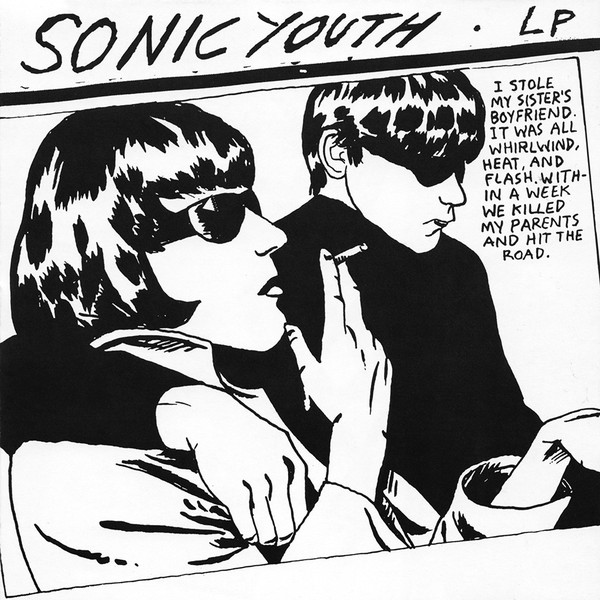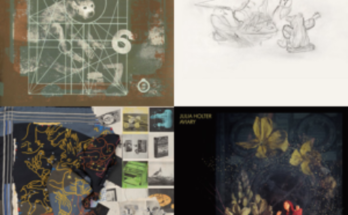Sonic Youth’s Goo is not music for radio – sometimes it’s barely recognizable as music. Featuring an unconventional layering of sound delivered on home-modified guitars, the 1990 album delivers its eleven tracks as if through television static. It’s an installment to the band’s discography that well suits Sonic Youth’s infamous style: noise rock.
The appellation calls to the NYC band’s unique approach to sound. In order to achieve desired effects, Sonic Youth tweaked their instruments via the application of the decidedly unmusical. In one instance, the members jammed screwdrivers between the strings and fretboards of their guitars to alter the sound produced. Such adaptions elevated the band’s (admittedly) cheap equipment from lo-fi to an unforgivingly harsh punk rock. These and other innovations played homage to the DIY attitude that has long characterized the punk spirit. Certainly, other alternative artists have benefited from the experimental abandon with which Sonic Youth made music.
Experimental – this word, if any, fits the band’s sixth album, Goo. Of Sonic Youth’s extensive discography, it is Goo that stands most commercially successful and most prominent among fans. With compelling spoken-word sections and an unflinching examination of topical subjects, Goo differentiates itself from previous albums. It also notably includes the group’s first forays into feminism with “Tunic (Song for Karen)” and “Kool Thing,” both written by band member Kim Gordon.
Markedly, “Kool Thing” was Sonic Youth’s first major single and remains among the most popular of the band’s discography. Stylized as an appeal to the empowered, the narrator confronts a figure identified as the eponymous “Kool Thing.” She demands “I mean, are you gonna liberate us girls / From male white corporate oppression? / Tell it like it is!” Interestingly, singer Gordon deviates from traditional song format to deliver these lines as spoken word. Coupled with the colloquial nature of “gonna” and “Tell it like it is!”, the track assumes the voice of the marginalized and indignant woman. It’s an unabashed response to passive misogyny. From “Superboy take a chance here / I don’t want to, I don’t think so” to the probing “Fear of a female planet?”, “Kool Thing” addresses the problematic inaction of influential men. Even the misspelling of “Kool” betrays the subject’s insincerity.
Other Goo tracks likewise intend to unsettle, if not through words. “Mildred Pierce” limits itself to a meager five words – all of which serve as exclamations rather than a complete thought. The song instead derives its strength from a layered, rumbling rendition of guitar and bass. This maintains the level of an aggressive hum before, in a culminating conclusion, devolving into a raging scream. It’s a decision that shifts the tone from impassioned to near-violent – a hallmark of Goo.
Not to overlook other songs on the album, such as “Dirty Boots,” “Mary-Christ” and “Cinderella’s Big Score,” one finds that they all similarly embody the ferocity of “Kool Thing” and “Mildred Pierce.” Unpolished and provoking, each track maintains the bizarre energy of Goo. This, considered alongside the landmark innovation of its creators, establishes it as an album that remains as arresting today as it is poignant.




